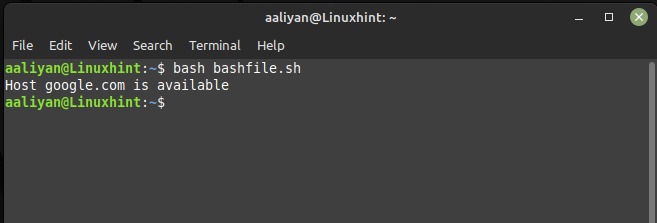In this article, we will discuss how to use ‘ping’ in Bash scripts to check the availability of a host.
Checking Host Availability Using ping in Bash
The ‘ping’ command in Bash can be used to check the availability of a host, and the syntax for using ‘ping’ is as follows:
The options available for the ‘ping’ command are:
‘-c count’: determines how many packets to send.
‘-i interval’: Specifies the interval between sending packets, in seconds.
‘–t ttl’: Specifies the Time To Live (TTL) value for the packets.
‘–w deadline’: specifies in seconds how long you must wait for a response.
‘destination’: This parameter specifies the hostname or IP address of the target host to ping.
Here is an illustration of how to use “ping” to determine whether a host is accessible:
HOST="google.com"
# Ping the host
ping -c 1 $HOST > /dev/null
if [ $? -eq 0 ]; then
echo "Host $HOST is available"
else
echo "Host $HOST is not available"
fi
Here I have first defined the host that we want to ping, which is ‘google.com’ and then used the ‘ping’ command to send a single packet to the host. The output of the ‘ping’ command is redirected to /dev/null to suppress any output to the terminal.
Ne,xt I have checked the exit status of the ‘ping’ command using the ‘$?’ variable and if the exit status is 0, it means that the host is up, and we print the message “$HOST is available”. If the exit status is non-zero, it means that the host is down and the message “$HOST is not available” is printed.
Conclusion
The ‘ping’ command is a simple and effective way to check the connectivity between two devices on a network. By following the examples provided in this article, you can start using ‘ping’ in your own Bash scripts to check the availability of hosts.

